An essential element of game design is surprise. As players learn a game, they enjoy moments of realization that make them feel smart, or experienced, or skillful. These level-up moments could be anything from learning a basic concept (like sequencing), an intermediate level strategy (like card advantage), to discovering or inventing a combo, to correcting one’s initial evaluation of a component. It’s this last experience we’ll be focusing on today, as Jeskai Elder is one of my favorite designs that was prone to misevaluation.
Back in 2015 Jeskai Elder seemed a very promising card and utterly failed to live up to its promise. Instead, Monastery Swiftspear and Monastery Mentor overperformed and left it in the dust. While it’s easy to focus on cards which underwhelmed and overperformed such as Tarmogoyf and Necropotence, it’s worth reflecting on cards that underdelivered.
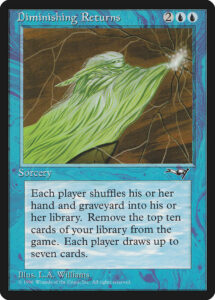
Less than the sum of its parts
Synergy is an oft-used term in games and game design and it can cover a variety of subtly different concepts. Right now, I’d like to talk about synergy between components, which is how different elements of a card influence each other. The terms I’ll be using are direct synergy, indirect synergy, and antisynergy. Let’s define each of them with an example.
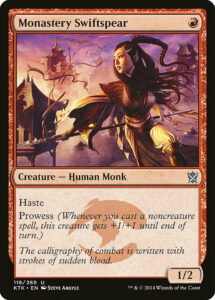
Monastery Swiftspear‘s Prowess is directly synergstic with its Haste and stats. Monastery Swiftspear wants to go in an aggressive red burn deck. Decks like that appreciate Haste, because it allows for immediate damage infliction. They also appreciate Prowess, since it magnifies the damage of burn spells. Furthermore, Prowess synergizes with its 1/2 stats by giving it a bit more longevity in combat when a more straightforward card like Goblin Guide would be outclassed. Because all of these features push the card in the same direction—applying pressure while casting spells—they are directly synergistic.
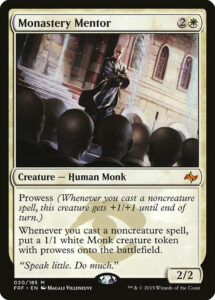
Monastery Mentor‘s Prowess is indirectly synergistic with its token creation. The tokens also have Prowess, so triggering Monastery Mentor‘s Prowess seems like it works directly with those tokens. However, it’s hard to get value from both components at the same time. Prowess is a mechanic that creates uncertainty in combat for your opponent—when they don’t know how big your creature can become, they have to make guesses which you can take advantage of. However, Monastery Mentor isn’t at its best when you’re threatening to make it a 3/3 or a 4/4 to win a combat—a 2/2 for three just isn’t that dangerous with a single trigger. Instead, the monk wants to be a Young Pyromancer that then turns into an Overrun.
The ideal play pattern is to generate an army (either over time or immediately by chaining spells), then use the last of your spells to set up a massive attack or to leverage Prowess to create impossible blocks for your opponent. So, while its Prowess and token generation do work together, they do so at different times and by pushing in different directions—and that’s what we’re calling indirect synergy.
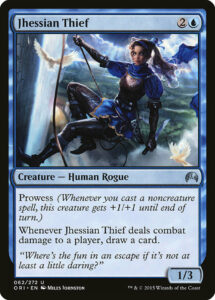
Jhessian Thief is an interesting one. Before I tell you my classification of it, I invite you to pause and take a guess of whether it has direct or indirect synergy.
As with Monastery Swiftspear and Monastery Mentor, consider the combination of the two abilities, the mana value, and the stats. Here, the most powerful part of the card is the Ophidian payoff. Prowess doesn’t improve that ability, but the uncertainty it generates makes it harder for your opponent to confidently block it. If they make the wrong move, you can eat their blocker and gain card advantage, or you get a free card and also gain card advantage. Any additional cards drawn improve your chances of being able to set up additional Prowess triggers, while blockers killed improve your chances of getting in a hit and drawing cards. So, by the terms as I’ve defined them, I’d say that Jhessian Thief‘s Prowess has direct synergy with its Ophidian ability—they push it in the same direction of attacking.
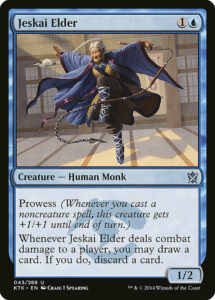
On its face, Jeskai Elder looks very similar to Jhessian Thief. It’s a small creature whose power doubles with a single spell, it threatens your opponent with a difficult choice, and it generates value when it hits. However, it falls far short of that mark. Jhessian Thief‘s critical third point of toughness means it can attack into a 2/2 or 2/3 while threatening to grow bigger, and bounce off when your opponent calls your bluff. Jeskai Elder demands resources whenever your opponent blocks, so you essentially have to have a large amount of cheap spells to keep it alive. The miniscule stats are deeply dependent on Prowess, and unlike Monastery Swiftspear (which attacks two turns faster), these stats are well below par immediately.
Moreover, Jhessian Thief has a massively more powerful reward for striking your opponent. It generates resources that make triggering Prowess more likely and hitting additional times even more devastating. Jeskai Elder merely loots—a powerful effect, to be sure, but far weaker than drawing a card. This smoothing works best when you have a fair amount of cards to work with and are crafting a strong draw. However, Jeskai Elder‘s small size demands you cast spells just to keep it alive. This depletes your hand and limits your flexibility in casting spells, working against its looting ability that rewards you for keeping cards in your hand.
That is antisynergy, where different components of the card work against each other. That’s why cubes favor cards like Looter il-Kor and Merfolk Looter that just do one thing well, even though they can’t attack from multiple angles like Jeskai Elder. The unfortunate monk is just less than the sum of its parts.
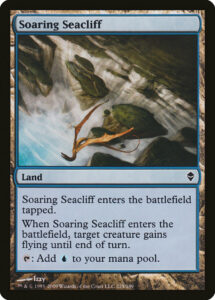
What’s the point of “bad” cards?
Mark Rosewater has been asked this question for decades. And it’s true, Jeskai Elder is not a strong card. A common answer is that it’s impossible to achieve a perfect balance among cards—even for games like Dominion with orders of magnitude fewer components than Magic, it’s still ludicrously difficult to somehow get each component the exact same power level as all others. However, I prefer a different answer: balance is bad.
Now, I’m not saying that Magic would be a better game if everything were Moxen and Okos—I’m not—but there’s this illusion among players that balance is an inherently good thing. When you zoom out, you absolutely want there to be a dynamic balance among archetypes in Limited or Constructed format, but only at that macro level. On an individual level, you want there to be power imbalances. My favorite metaphor for this is rock climbing (a sport I’ve admittedly not engaged in since childhood, but I like the metaphor). A perfectly balanced game is a completely smooth, uniform rock face. It doesn’t matter how you approach, it doesn’t matter which path you take, the result is always the same. There is no easier path for an inexperience climber nor a harder path for someone seeking a challenge. Your choices don’t matter, your creativity won’t be rewarded, and you will only learn how to do one thing. Good game design is full of rough edges. It has handholds and paths for people who need them, unexpected and sometimes unintended interactions for those who seek them, and surprises for players of all levels.
Jeskai Elder is a tricky foothold that can’t quite support your weight. There are easier paths up and there are more efficient ways to climb. It presents an opportunity for all to learn to evaluate just a little bit better. But you nevertheless can still climb with it. And while its nature is to disappoint, I love how it’s not a completely awful card like Bog Hoodlums—it presents flexibility and promises to be anything from a reanimator enabler to a tempo/aggressive threat but just underdelivers too much.
It’s the kind of card that I always want to include in a cube, but I’m always skeptical of when it’s in other peoples’ cubes. I think it’s a wonderful design because it’s so exciting for something so lackluster. It’s a good reminder to create weaker cards with dreams rather than only make Kraken’s Eyes as popular traps for newer players or understatted vanilla creatures to reduce complexity. Sometimes, they can get reprinted in a Masters set and trick people all over again into thinking they’re good (while being actually good just rarely enough to keep the dream alive).
Zachary Barash is a New York City-based game designer and the last commissioner of Team Draft League. He designs for Kingdom Death: Monster, has a Game Design MFA from the NYU Game Center, and does freelance game design. When the stars align, he streams Magic (but the stars align way less often than he’d like).

